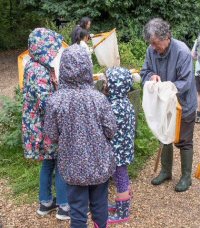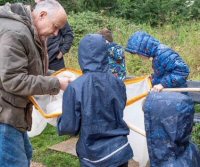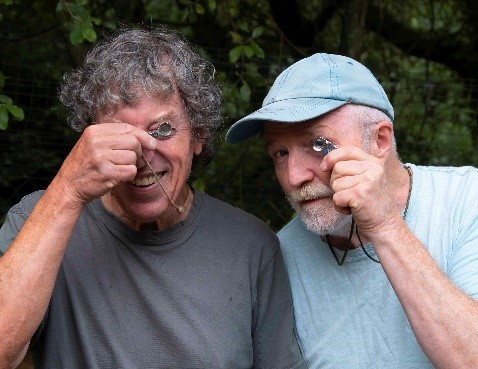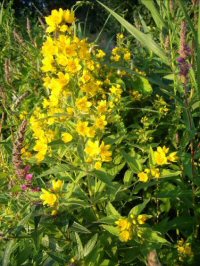Newsletter
Current
Previous
|
August 2023
|
|
|
|
|
That extreme weather events are getting more frequent and more extreme is commonly accepted. In Britain we have recently experienced the hottest June on record, and July was one of the wetter ones. But these are little compared with the scorching Mediterranean temperatures that have blighted Spain, Algeria, Italy and, most conspicuously, Greece, with wildfires over the past couple of weeks. The 40-degree temperatures have been similar in China and North America too, while in northern India, there has been disastrous flooding during the monsoon season. “The era of global boiling has arrived”, declared Antonio Guterrez in a speech at the UN headquarters in New York on 27 July. "Extreme weather is becoming the new normal," he continued. "All countries must respond and protect their people from the searing heat, fatal floods, storms, drought and raging fires that result." It might seem a bit remote from temperate Berkshire, but the evidence is clear and we can see examples from around the world on television or, more directly, on holiday – as many on Rhodes have found to their cost.
Edwin A.R. Trout
|

|

A mass of Oxeye Daisies in Instow Road
|
Storm damage
In mid-July this wonderful oak tree overlooking the meadow at the edge of Oak Wood (pictured left) succumbed to a buffeting by strong winds and the trunk split in two (see right). The fallen branches have since been taped off and cleared away.
|

|
|
|
Committee News
Announcements from the AGM and latest committee meeting.
Honorary Secretary
Having taken the minutes at the AGM in January, Stewart Macleod has kindly assumed the role of Hon. Secretary.
Newsletter sponsorship
Since the EEG Newsletter was introduced in 2005, the Group has been fortunate to enjoy the sponsorship of Oracle Corporation, which undertook the printing free of charge. This arrangement has drawn to a close and to meet our printing costs for the 2023 issues we are grateful to have been awarded a grant from Earley Town Council. There is no certainty that this will continue, of course, so the committee is considering a number of possible measures – to abandon print and rely on PDF delivery by email; to subsidise continued printing from our limited funds; to charge individuals for the option of a print copy; or to seek a new source of sponsorship. If you, or perhaps your business, would consider sponsorship, we’d be delighted to discuss the options.
Do please get in touch.
Contributors to this issue
Charlotte Allchin
Alice Ayers
John Booth
Bob Collis
Sheila Crowson
Edwin Trout
Elizabeth Trout
Edited by Edwin A.R. Trout
Printed for the EEG by Purco Print
|

The EEG’s 2024 Calendar Now on Sale
The EEG’s 5th Community Calendar, ‘Nature in Earley 2024’ is now on sale. The calendar has continued to prove popular with local residents, with some lovely images of the local environment to see each month – and they make great Christmas presents!
The 2024 edition includes UK bank holiday dates and more images from more local photographers than the previous edition, including local wildflowers, birds, fungi, insects and scenes of the natural environment around Earley.
Unfortunately, we have had to increase the price of this year’s calendar to £6.00 as production costs have risen. The calendar is still a bargain and monies raised will be used to support the EEG’s many activities and initiatives.
The calendar will be on sale from the EEG stall at Earley Town Council’s Green Fair to be held in the field at the end of Maiden Erlegh Lake off Beech Lane on Saturday 5th August, between 10am and 3pm. It will also be on sale at various locations, soon to be announced, around Earley.
You can also order copies by email and we will then arrange for delivery or collection.
Thank you to all the photographers who have submitted photos and to all those who have bought previous calendars and, hopefully, will buy the new edition.
Bob Collis, Calendar Editor
|
|
|
|
EEG Events
Reports of events arranged by the Earley Environmental Group

The EEG’s 2023 programme of events has included a series of ‘nature and history walks’ within and around the Earley area.
These have proved to be popular with members and newcomers to the EEG, attracting people who are interested in natural history and the built environment, as well as those who just want a good walk!
Dawn Chorus
Elaine Charlson and Sally Wearing led a great walk on 29 April to hear the dawn chorus:
| Blackbird | Blackcap |
| Black-headed Gull | Blue Tit |
| Canada Goose | Carrion Crow |
| Chiffchaff | Common Tern |
| Coot | Cormorant |
| Egyptian Goose | Goldfinch |
| Great Spotted Woodpecker |
| Great Tit | Grey Heron |
| Herring Gull | House Sparrow |
| Jackdaw | Jay |
| Long-tailed Tit | Magpie |
| Mallard | Mandarin Duck |
| Moorhen | Mute Swan |
| Robin | Song Thrush |
| Stock Dove | Tufted Duck |
| Wren | Woodpigeon |
Charlotte writes: “The reserve looked stunning with a morning mist rising from the lake.Hot drinks and croissants were enjoyed!"
|
Nature and History Walks
Organised by Charlotte Allchin, the EEG’s Events Co-ordinator, we’ve held four walks so far. In April we undertook one of the walks to be included in the ‘Walks and Cycle Rides in and around Earley’ book planned to be published next year. Starting at Sol Joel Park we walked a 3.25-mile circular route encompassing Earley Station and Highwood. In addition to route guidance and maps, the book will include interesting information on topics of local history. Excerpts on local history from the book’s draft text were read to the group by walk participants; with added information about the natural environment provided by Earley Town Council’s Senior Ranger, Grahame Hawker.
In May, we organised a walk as part of the Reading Walks Festival. Starting at the Interpretation Centre in Instow Road, the walk took its participants on a guided tour of the Maiden Erlegh Lake and Moor Copse with Grahame giving us a splendid talk-as-you-go on the reserve’s history and flora and fauna. Although only a short walk, there was plenty to see and hear about. This was followed in June by another walk from the planned Walks and Cycle Rides book covering North Earley (see below). This 4.75-mile walk started at the Waterside Centre at Thames Valley Park and took in the River Thames walking towards the Kennet, passing through New Town to see the variety of building styles and brickwork, before crossing Palmer Park and into more urban environments to return to Thames Valley Park to see its local nature reserve and more of the Thames.

On the same day, Charlotte followed this up with a short walk around the Maiden Erlegh Local Nature Reserve for youngsters and their parents interested in natural history; identifying animal tracks, butterflies and bugs, and telling us all about their own interests in nature and wildlife.
Our fifth walk for the year will be held on Saturday 11th November at 10am, starting at Maiden Place. The walk will again cover one of the walks from the Earley Walks and Cycle Rides book and will take in woods and meadows (such as the ‘Wood of Eagles’) in the south of Lower Earley and includes Mill Lane, Gipsy Lane and Cutbush Lane. The walk will be around 2 miles long with a walking time of around 50 minutes, although this timing is likely to be increased as there will be stops to hear about local history and the natural environment.
Please join us if you can.
Bob Collis
|
|
EEG Events
Reports of events arranged by the Earley Environmental Group.




|
Broodbank Bug Hunt Catches Them Young
By Bob Collis
The EEG’s annual Bug Hunt, held this July at the Maiden Erlegh Local Nature Reserve, proved to be a bug-sweeping success with enthusiastic youngsters and parents attending each of the morning and afternoon sessions hosted at the Interpretation Centre, Instow Road. The Bug Hunt was led by EEG’s star entomologist Alan Broodbank – after whom the Bug Hunt is named – with the assistance of Charlotte Allchin, the EEG’s Programme co-ordinator, and several EEG members.
Heavy rain threatened but spirits weren’t dampened as we started with a warn-up mini-session on bugs and their importance from Alan. This was followed by the hunt for bugs in the long grass and undergrowth close-by in the nature reserve. Many beetles, flies, bugs, and spiders were caught, potted-up and studied back at the Interpretation Centre, where we were able to identify the less well-known and view some of the most interesting through Alan’s microscope. The bugs were then released back where they were found.
The rain came on a little for the afternoon session, but our enthusiasm remained high, and despite the damp, we did it all over again! We were delighted to be joined by George McGavin – entomologist and former One Show presenter - and some of his family members, including his four grand-children. Most importantly, the youngsters (and the oldsters) learnt a lot about bugs - and had a great time! We are very grateful to Alan and Charlotte for putting on such a delightful event.

The photos to the left (top to bottom) show: Alan identifying bugs in a sweep net; matching bugs against an identification chart; the microscope in action; more bug hunting and, above: Alan and George with their hand lenses.
|
|
Public Policy
A round-up of developments in policy that affect the climate and natural environment in Earley and beyond
Climate Emergency: “We can still stop the worst”
“The evidence is everywhere. Humanity has unleashed destruction. This must not inspire despair but action.
We can still stop the worst, but to do so we must turn a year of burning heat into a year of burning ambition and accelerate climate action now."
Antonio Guterres – Secretary-General of the United Nations
National Climate Policies
The UK Climate Change Committee’s Annual Report to Parliament says, “confidence in the UK meeting its medium-term targets has decreased in the past year.”
Some key points from report:
- Strategy is over-reliant on technological solutions, some of which have not yet been deployed at scale
- Should empower and inform households and communities to make low-carbon choices
- Planning policy needs radical reform to support Net Zero
- Expansion of fossil fuel production is not in line with Net Zero.
- There should be no net airport expansion across the UK
Friends of the Earth comments: “Today’s progress report is a damning assessment of the government’s new carbon reduction strategy … there are now only credible plans for less than a quarter of the emissions cuts needed to meet the UK’s legally binding climate targets”.
|
Nature Recovery Policies
Compiled by John Booth
Local Nature Recovery Strategies (LNRS)
LNRS are being introduced to help local planning authorities identify opportunities to achieve ‘net gain’ – compensatory measures when nature is destroyed by development - and to assist them to promote environmental recovery and sustainability in their local plans.
The government’s “overall ambition is that they will be a powerful new tool that will help the public, private and voluntary sectors work more effectively together for nature’s recovery, and enable collective effort to be focused where it will have most benefit. Key to achieving this will be creating genuine local collaboration with a partnership of organisations and individuals working closely with each responsible authority”.
The government has finally announced the ‘Responsible Authorities’ to lead on the creation of the LNRS. Berkshire’s lead ‘Responsible Authority’ is the Royal Borough of Windsor and Maidenhead, so Wokingham Council officers will need to work with them. Earley and EEG can look to build on Earley’s Green Infrastructure Action Plan.
The responsible authorities and people involved in preparing a strategy can choose how they want it to look, but every strategy must contain:
- A local habitat map
- A written statement of biodiversity priorities.
LNRS are expected to propose actions such as the:
- creation of wetlands
- restoration of peatlands
- planting of trees and hedgerows
- more sustainable management of existing woodlands and other habitats like grasslands
These actions are intended to help nature itself and help to improve the wider natural environment.
Nature Recovery Targets
“Sitting at the heart of the government’s Environment Act, the targets require us to: Halt the decline in species populations by 2030, and then increase populations by at least 10% to exceed current levels by 2042.”
So nature can get worse for the next seven years before getting back to the present status by 2042. Is that really the best we can expect?
Wokingham Local Plan
Progress on the Local Plan Update (LPU) is “ongoing” i.e. delayed. National government launched a consultation on changes to national planning policy in December 2022. The government's response to the consultation was expected in Spring 2023. Wokingham Council say it is important to reflect on any changes in national policy before agreeing a revised programme for the LPU and publishing the next stage.
|
|
Maiden Erlegh LNR
What’s happening on Maiden Erlegh Lake and nature reserve
Pochard spotted
I was excited to see, on 3 May, a visitor of a type I’ve not seen on Maiden Erlegh Lake over the 19 years I’ve lived nearby: a Pochard – a diving duck similar to the Tufted Duck, but the male with a russet head and grey, rather than white flanks. In his book Lapwings, Loons & Lousy Jacks (2016), EEG member Ray Reedman explains the Pochard’s distinctive name:
“[W.B.] Lockwood traces two distinct dialect words which lead to the name Pochard: Poker and Poacher. These words would appear to have a common root, however, and both suggest an action of ‘poking about’, a sense which is less obvious today in the second form. There is evidence that the word Poacher is attached to Wigeon in America, and it may well be that originally the two russet-headed British ducks were confused, since the term makes less sense with the feeding habits of a diving duck which spends much of the day asleep on the water. In keeping with a number of bird names, such as mallard, the -ard suffix was attached, appearing first in [William] Turner in 1544. [John] Ray hesitated between Poker and Pochard, but [Thomas] Pennant, as so often, stabilised the name in the current form in 1768.”
Edwin A.R. Trout
|
The First Cygnets in Several Years

After several years without cygnets on the lake, Facebook was abuzz with speculation about the resident swans this spring. And sure enough, a nest duly appeared at the western end of the lake in April, with the female sitting for several weeks. Six cygnets hatched on 19 May, and while one was soon lost, five now much larger juveniles remain.
Canada geese grazing the verges and lawns

The behaviour of Canada geese follows an ongoing pattern, with the summer months seeing the accumulation of goslings from several broods into a single ‘nursery’ or ‘creche’, and with the adults refraining from flight while their feathers are refreshed, grazing on the sward. In Maiden Erlegh, this usually means the verges and lawns of the roads surrounding the lake, and this year, the number of birds and the distances travelled have been greater than in the recent past. The young of more than five clutches coalesced in May to achieve a stable creche of 27, and though a few casualties have since been sustained, a couple of later stragglers have been added. And not content with Lakeside and Allendale, the geese have wandered as far as Kennedy Gardens and Radnor Road.
|

|
Stokerpix
Attending the May Fair in the Oxfordshire village of South Stoke, near Goring, I had the pleasant surprise of bumping into an old classmate from my schooldays, a chap called Simon Booker. Under the shelter of a gazebo, he had a stand to promote his wildlife photography, and very impressive his wares were too.
www.stokerpix.com
The image above is one of the rolling website banners, taken with acknowledgement from www.stokerpix.com.
|
We got chatting and he explained how, having moved to the village about six years ago, he’d started taking pictures of the local wildlife on his phone while walking his dog. He’d share images on the community Facebook page and was encouraged by the comments he received. Getting the bug, he invested in a decent camera and then a long lens, while lockdown gave him the time to develop his technique. Now he is on the verge of becoming semi-professional with commissions for dog portraits and sporting events as well as wildlife. “Apparently, I’m quite good”, he said modestly, conveying a sense of third-party endorsement.
Being in the right place and getting close to his subject is key, Simon claimed, with attention paid to fieldcraft and camouflage, and use of the silent shutter giving him an advantage. And the results bear witness. Prominently displayed on his May Fair stand was a close-up of a stoat standing astride a rabbit, having just dispatched its prey, and staring defiantly into the camera. It was taken from a matter of feet away: a once in a lifetime view enabled by the anonymity of a hide and effective camouflage. There were images of deer and hares from the fields around, close-ups of mice in the hedgerows, and many shots of birds captured in flight or – like the brilliant kingfisher – perched on a branch. The detail is astonishing.
His website is a treat, with a rolling header of fabulous photographs, backed up by an extensive gallery. Prints are available for purchase, but casually scanning the site brings its own reward too. Go to Stokerpix.com to see for yourself. (There is also the recording of an interesting interview Simon gave on Radio Berkshire in January.) And like the EEG, he has produced a calendar this year, as a medium for photographs of his own locality. The proceeds benefit the Stroke Association.
An accomplished presenter, Simon has started to give illustrated talks too, for audiences that include the RSPB and Withymead Trust as well as amenity groups such as the local WI and photography clubs. Perhaps one for our future programme?
Edwin A.R. Trout
|
|
EEG Programme
We list the Group’s forthcoming walks and talks – fuller details are on the EEG website.
2023 Programme
Walks and Talks
Please see the EEG website and public notice boards for further details and updates.
Saturday 5th August
Earley Green Fair
Thursday 31st August
Bat walk led by Rose-Ann Movsovic. 7.45pm at the Interpretation Centre, Instow Rd. Please email to book.
Sunday 10th September
Photographic walk led by Bob Collis.
Meet at 11am at the Interpretation Centre, Instow Road. Bring your cameras.
Tuesday 10th October
An Evening with Lucy Jones 7.15pm at Maiden Place.
Saturday 11th November
Walk south of Lower Earley
Meet 10am, Maiden Place
Saturday 16th December.
Carols around the lake
Details to come.
Yellow Loosestrife

|
Garden Survey
Sheila Crowson looks back at garden recordings by our two regular garden surveyors, Gillian and Margaret, joined by Sue Wilder: –
APRIL/MAY: Margaret On 7th April Margaret noted, ‘Wren under pool net for insects’. May 24th ‘Heron still looking at pool!’, so perhaps a possible meal for the heron. Our grey herons do not migrate./p>
MAY: Gillian May 19th noted that 25 starlings had fledged. Starlings not popular for habit of raiding bird feeders, but be careful what you wish for - their numbers have declined by 66 per cent in Britain since the mid-1970s. Starlings are heavily dependent on soil invertebrates like earthworms and leatherjackets, and it is possible this food supply has either declined or perhaps become less available during dry summers./p>
JUNE: Sue has made an extensive list of wildflowers in her garden. So many of these would have been used as a food source or medicinally in the past, e.g. – Fat Hen, the young leaves, shoots, and tender tips of which can be harvested and used as a nutritious vegetable. Self Heal is a common ingredient in Chinese medicine, and in North America was used by many Native American groups as part of their traditional herbal medicine. Yarrow is a widespread wildflower and was known as Devil’s nettle, Devil's plaything and Bad man's plaything originating from an old superstition that Satan used to walk the streets at night and shake yarrow at homes of those he wished to curse./p>
All wildflowers should be treated with care, due to possible cause of skin troubles or unwanted internal effects.
Addendum
Following her note in the April issue, about blackbirds feeding chicks of other species, Alice Ayers sends a photo of a cutting from a bag of Peckish Bird Seed, adding the comment, “So perhaps not so unusual?!”

|
|
|